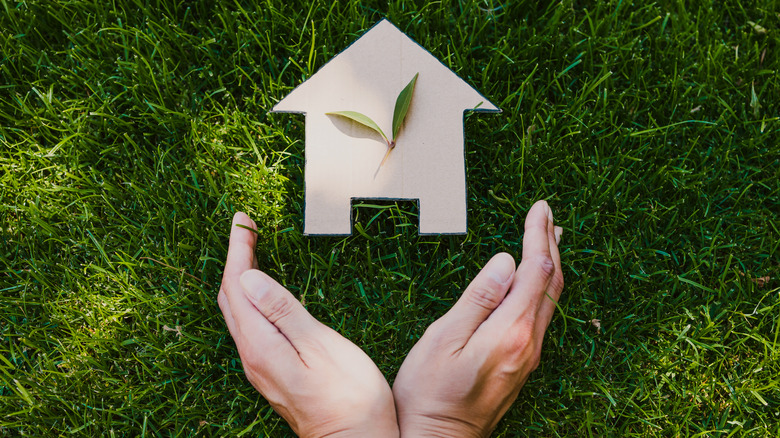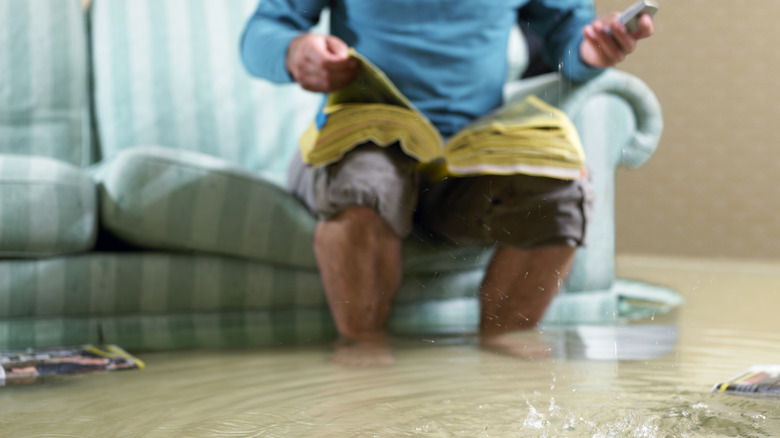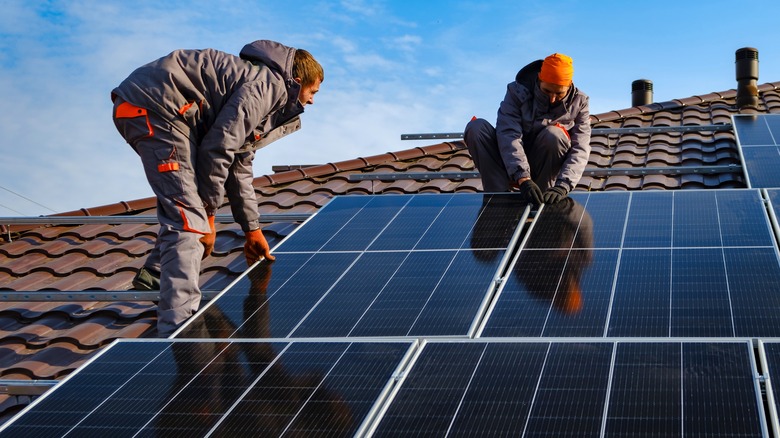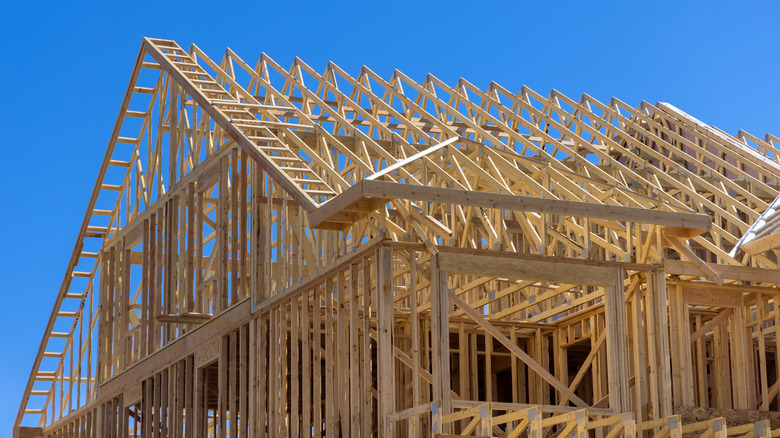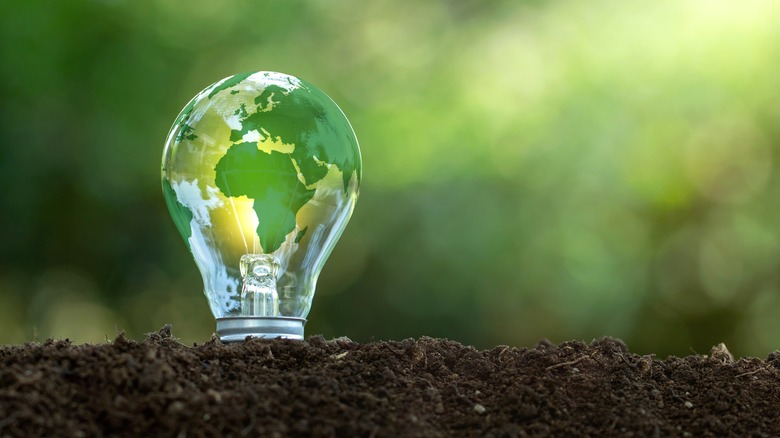How To Make Your Home Resistant To Climate Change, According To An Expert
Climate change is a considerable hurdle that the world faces. The United Nations claims that climate change is the most significant threat humanity has ever seen. In addition, World Wildlife Fund reports that our current climate crisis has sped up the proliferation and severity of droughts, storms, global heat, sea level changes, and much more. These problems affect humans, to be sure, but they also impact the global ecosystem of plants and animals that maintain the stability of life on this planet.
These challenges have led many homeowners to consider improvements they can make in their lives and homes to better stand up to the physical manifestations of climate change. From increasing wildfire damage and drought conditions in the American West to fearsome blizzards, hurricanes, and tornadoes elsewhere, homeowners are increasingly staring down the effects of a climate in flux.
In an exclusive interview with House Digest, David Steckel, Home Expert at Thumbtack, offers some wisdom for the trying times that appear to lay ahead. Improving your home's resistance to the worst of climate change can make your property safer and help you play your part in a continuing humanitarian battle against carbon emissions and unsustainable processes that continue to exacerbate these threats.
Be prepared for hurricanes
Hurricane destruction accounts for billions of dollars in damage, with Hurricane Katrina — the most financially devastating hurricane on record — inflicting losses of $172.5 billion (via The Weather Channel). But more than the financial toll, hurricanes take lives, dismantle homes and businesses, and leave people stranded with only a shred of hope for the hard road of recovery that lies ahead.
"In areas like Florida, legislation construction takes hurricanes into account. The most significant area to focus on though is the third nail issue, whereby hurricane straps that go along the trusses only have two nails. Adding a third nail dramatically strengthens the roof and will also get you a discount on insurance," says Steckel. Roof integrity is central to preventing damage to the home in hurricane conditions. "I'd also strongly advise looking into hurricane shutters and making sure you limit loose objects in your yards, especially when you know a storm is on the way," he continues. Another easy step here is closing interior doors during high-wind events. Equalizing pressure and preventing your roof from blowing off will keep your home and the life you lead in it safer during each successive hurricane season. This is crucial whether you live in Florida or somewhere farther inland or northward and see fewer powerful storms head your way.
Make your home flood-proof
Flooding can occur with hurricane-force winds or as a result of natural seasonal changes, especially around rivers. The Mississippi River floods fairly routinely, with the longest flood occurring just a few years ago in 2019 (and lasting for a bewildering 211 days), according to the National Weather Service. Unfortunately, Steckel says, "Floods and water ingress are not going anywhere; they're only going to get worse."
Flood conditions can impart prolonged impact and adversity on a home and family. If floodwaters breach your home, you're likely looking at a long rehabilitation period to repair or replace flooring and furniture throughout the house. You may also need to replace drywall or even the structural beams behind it if the water is allowed to sit in the property long enough.
"My number one suggestion would be to add a backflow preventer to stop sewer water from coming into your home during a storm. Get a battery backup for your sump pump, make sure your downspouts divert water away from your home vs. towards the foundation, and clean your gutters. Know where your water shut-off valve is and make sure caulking is maintained. And when you're renovating, make sure you choose a strong waterproofing contractor," he advises.
Strive for a net zero home
A net zero home is more achievable than many homeowners might imagine. "This is when your home produces as much or more energy than it consumes," Steckel says of a net zero property. There are some changes to be made in the lifestyle you lead and the makeup of your property, but much of this voyage toward net zero actually falls to energy usage. "You do this" he explains, "through efficiency and actual production. For efficiency, make sure the air tightness is below 1.0ACH50, and insulation is at least R28 for walls and R53 for roofs." Insulation efficiency prevents the energy you use (in the form of heating and cooling processes) from leaking out of the home, ensuring that you must overuse these systems to get the interior atmosphere you seek.
"Additionally, make sure you're salvaging rainwater, optimizing window locations and appliances, and using at least solar to produce energy," Steckel notes. The other side of the coin in a net zero home is electrical power creation. If you can make your own electricity through any number of consumer options available, you can reduce your dependence on the grid and, as a result, the community's dependence on coal, oil, or other non-renewables. Installing solar panels will more than pay for itself over the usage lifetime you enjoy with the feature, making this a cost-effective move, too.
Get LEED certified
Sustainable building materials and practices are a key feature in any new construction project. Whether you're adding an extension or working with a contractor to build an entirely new home, these priorities can enhance the environmental impact you are making on the ground beneath your feet. "Leadership in Energy and Environmental Design (LEED), developed by the U.S. Green Building Council in 1998, is a certification system for rating buildings that are constructed with environmentally-friendly products and practices; it is the most widely used green building system in the world," Steckel says.
However, "LEED is only for new home construction," he notes, "and is based on third-party reviews to award LEED-certified, silver, gold, or platinum status. Scores are given based on adherence to guidelines in 7 areas: sustainable sites, water efficiency, energy and atmosphere, materials and resources, indoor environmental quality, innovation in design process, and regional priority." When tackling a new home construction, always use these processes and strive for a LEED certification. This will guarantee that you are leaving the slightest impact possible on the environment around you, substantially reducing your contribution to the globe's climate peril.
Be a sustainable consumer
Finally, your consumer habits should fall in line with your priorities. It's easy to strive for a greener footprint in your community but fall back on lackadaisical consumer practices. In truth, being a more sustainable user of community resources starts with just an ounce of practicality. "There's a lot of work that we can do to improve our water and energy consumption," Steckel notes, "and, in turn, make it more sustainable."
Steckel says, "From low-flow showers to tankless water heaters, and smart irrigation systems, we're seeing a rise in smart home technologies that help us minimize our climate footprint. For example, if you have a leak in your toilet, that can result in 7,000 gallons of wasted water. If you have a sprinkler that's leaking, there are a lot of new advancements in smart home technology that can automatically shut off water systems when a leak is detected, or sound the alarm if energy consumption spikes." Smart home features like these are gaining traction in homes across the United States. With a few minutes of your time, you can dramatically enhance your home's usage statistics by implementing simple and intuitive monitoring regimes. "These additions, as well as investments in things like heat pumps, solar panels, and electric car chargers, will be big home additions in 2023," says Steckel.
